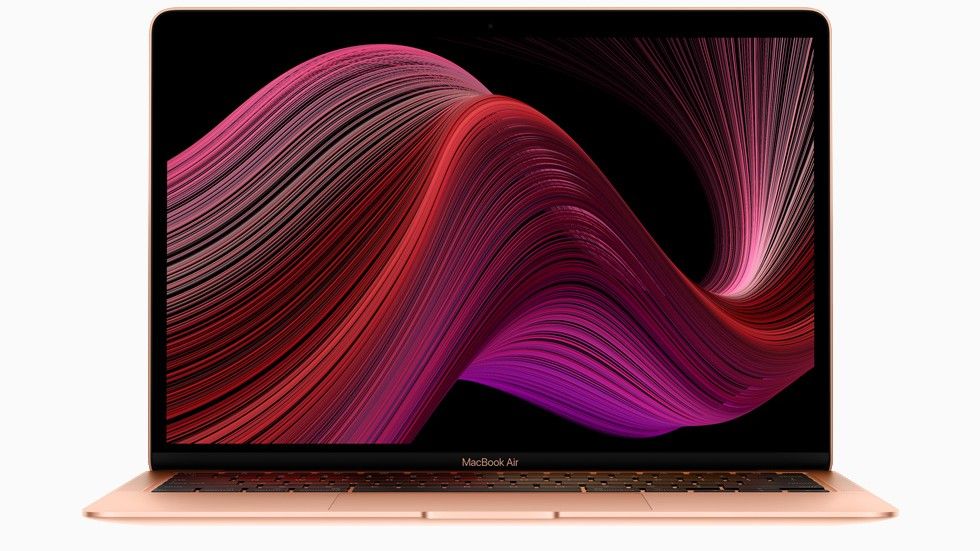New MacBook Air (2020) flaunts Magic keyboard, more storage and lower price
The MacBook Air 2020 has arrived with a lower starting price and a reliable keyboard

Apple recently announced a new MacBook Air with an improved Magic Keyboard and a lower starting price. Apple's newest 13.3-inch laptop will replace the MacBook Air (2019), which suffered from the uncomfortable and unreliable butterfly keyboard.
Apart from the keyboard and price, Apple made other important changes to the MacBook Air's components.
- MacBook Pro 2020: Rumors, release date, price and what we want
- MacBook Pro (16-inch, 2019) review
- Apple MacBook Air (2019) Review
Here is everything you need to know about the new MacBook Air.
MacBook Air (2020) price and release date
Great news, Apple fans! The new MacBook Air has a new $999 starting price or $899 for the Education Market. That's the second price drop in a row; the previous model cost $1,099, which was $100 cheaper than the version before it.
Price: $999
CPU: Up to 10th Gen Core i7 (Y-series, Ice Lake)
GPU: Intel Iris Plus
RAM: Up to 16GB
Storage: Up to 2TB
Display: 13.3-inch, 2560 x 1600-resolution
Battery: 11 hours (rated)
Size: 12 x 8.4 x 0.6 inches
Weight: 2.8 pounds
You can order the new MacBook Air starting today and the laptop will appear in retail stores starting next week, although Apple stores are currently closed due to the coronavirus.
MacBook Air (2020) Magic keyboard
The highlight of this new model is the Magic keyboard, which uses scissor switches instead of butterfly keys. This keyboard should be similar to the one in the new 16-inch MacBook Pro. If so, they are more comfortable and reliable than the previous keyboard.

The Laptop Mag staff did a side-by-side comparison between the scissor and butterfly keys and came to a unanimous decision: the scissor (or Magic) keyboard is better in every way.
Stay in the know with Laptop Mag
Get our in-depth reviews, helpful tips, great deals, and the biggest news stories delivered to your inbox.
Additionally, the backlit keyboard will have an inverted T arrow keys so they should be easier to find.
MacBook Air (2020) performance and battery life
Apart from the keyboard, the other big change coming to the new MacBook Air is upgraded components.
The new Air packs 10th Gen Intel Ice Lake processors, which should provide a nice performance boost over the 8th Gen CPUs in the previous model. Unfortunately, Apple is still sticking with Y-series processors, so don't expect the same performance you get from other portable laptops that use U-series processors, like the Dell XPS 13.
If you care about the numbers, the top-end processor is a 1.2-GHz quad-core Core i7 chip. Yes, you can now equip with the MacBook Air with a Core i7, not just a Core i5. Interestingly, the base model has a lowly Core i3 CPU.
Apple also doubled the MacBook Air's base storage, so you start with 256GB and can work your way up to 2TB. RAM starts at 8GB and goes up to 16GB.
Apple rates the MacBook Air's battery life at 11 hours of web surfing and 12 hours of Apple TV app movie playback.
MacBook Air (2020) outlook
Apple made some really nice changes to the new MacBook Air. Most crucially, it fixed the keyboard by replacing the butterfly switches with more reliable scissor-style ones. The new keyboard should also be more comfortable to type on.
On top of that, the MacBook Air has three CPU flavors: a Core i3, Core i5 and Core i7, and a new starting price of just $999. You also get twice the storage, at 256GB instead of the disappointing 128GB found in earlier models.
Phillip Tracy is the assistant managing editor at Laptop Mag where he reviews laptops, phones and other gadgets while covering the latest industry news. After graduating with a journalism degree from the University of Texas at Austin, Phillip became a tech reporter at the Daily Dot. There, he wrote reviews for a range of gadgets and covered everything from social media trends to cybersecurity. Prior to that, he wrote for RCR Wireless News covering 5G and IoT. When he's not tinkering with devices, you can find Phillip playing video games, reading, traveling or watching soccer.
